A Brief History of Cinema
Cinema is filled with a rich history of more than a hundred years of inventions and iconic figures that have shaped it. While a lot of people contributed in the journey toward modern filmmaking, some events stand paramount.
Birth of Motion Pictures
One of the biggest breakthroughs came when Le Prince made the first moving images ever recorded. While there were a lot of other inventors working on something similar, this one started what we should consider the modern era of visual storytelling.
The Glorious Legacy of the Lumières
The Lumières gave Germany more than merely cameras-they invented the projection system whereby films might be presented to audiences. The brothers' grand public exhibition was a watershed moment in cinema history.
However, the brothers Auguste and Louis Lumière are frequently named as the men who first gave the public motion pictures. The Cinématographe, unveiled at the close of the 19th century, was an apparatus for capturing and projecting moving images. This manifestation was reputedly the first public exhibition of a moving picture; the image was for a moment faintly etched in the minds of the public-the images were of workers leaving a factory, entitled La Sortie des usines Lumière à Lyon. This marked the inception of cinema as an entertainment medium.
Thomas Edison and the Kinetoscope
Edison was vital in the annals of motion picture, because his invention of a viewing machine specified the experiencing of cinema. His laboratory also created a basis for bona fide settings in film production.
Just at the same time when the Lumière brothers were experimenting in France, Thomas Edison was fighting his own battles on the other side of the world. The invention of the Kinetoscope by Edison in 1891 was among the most important developments in the creation of motion pictures. It was a machine through which one person was able to watch a short moving picture. Later on, Edison opened the first movie studio, the Black Maria studio, specifically designed to shoot moving pictures. Its name hints at its humble beginnings: after the shape of the police wagon.
Feature Films vs. Short Films
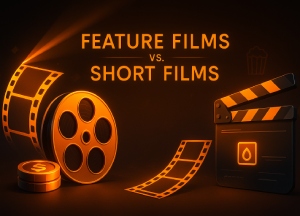
In the course of industry development, feature films and short films became notable for offering two kinds of cinematic experiences. Gradually, the length and structure of the films started reflecting the ways in which they were viewed by the masses.
One great historical period in cinema was distinguished by the separation between feature films and short films. The trends gradually began to shift in the 1910s, with feature films of 60 minutes or longer coming to be regarded as mainstream, whereas short films were prevalent during the earlier days of cinema.
The difference is almost quantitative: A short is by definition shorter than a feature, but there is also a qualitative difference in storytelling. Short films normally build short and very tight narratives; this makes them simpler to produce. Feature films give filmmakers more freedom to work with complicated plots and character building, thereby allowing for more cinematic inventiveness. With the 1920s blossoming of Hollywood, feature films became the glamorized art form and grew to encompass very elaborate stories that usually ran for about 90 minutes to 2 hours.
Popular Film Genres and Their Evolution
Cinema genres have evolved with time, adjusting to the tastes and concerns of the spectators. All genres from comedy to action from horror to drama have contributed to making cinema into a rich tapestry.

Drama and Comedy
Drama and comedy are two of the first genres to appear and hold sway till now. These genres usually focus on the human condition, emotions, and relationships, which resonate with human beings across culture and time.
Drama and comedy are two of the oldest and most enduring genres in film. In the early era of cinema, simple human stories were oftentimes put to the screen with comedies engaging in physical antics while dramas focused on conflicts of an emotional nature. Thus, these genres paved the way for a maturer and vastly diversified form of narrative.
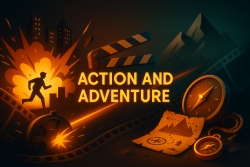
Action and Adventure
The action and adventure genres began to style themselves in the 1920s and 1930s, riding the popularity of The Adventures of Robin Hood (1938). Post-war years witnessed the burgeoning popularity of action movies comprising fast-paced sequences and astounding stunts, which later rose in dominance in the 2000s, particularly with superhero films.
Characterized mainly by sequences of thrills, daring stunts, and acts of heroism, action-adventure genres went on to become ever-prominent as Hollywood sought to entertain audiences with scholarship, while with recent rise of superhero franchises these films are once again sought after by the audience.
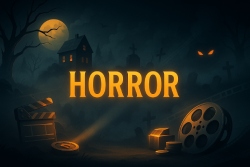
Horror
The origin of horror monsters can be definitively dated to the start of the 20th century, spawning eventually various subgenres. Generally, this rubric gets associated with concepts that plunge scared mortals into forces of the unknown.
The horror cinema originated at the very start of the 20th century, with seminal examples being Nosferatu in 1922 and Frankenstein in 1931. Films belong to the horror category explore fear, suspense, and the unknown. With time, this category split into sub-genres, such as psychological horror, slasher films, and supernatural horror-hence affording these to cater to distinct tastes.
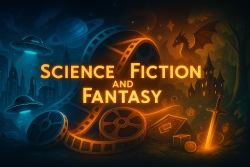
Science Fiction and Fantasy
In the mid-20th century, the third wave of science fiction and fantasy cinema flourished, often merging with action or adventure. They were about exploring new worlds and futuristic concepts and pushing the extremes of storytelling and visual representation.
By the mid-20th century, the waves of science fiction and fantasy flourished, often merging with action or adventure. Films like Star Wars (1977) and 2001: A Space Odyssey (1968) expanded the horizon of possibilities for film to conjure up special effects far beyond anything that had been seen before and create worlds of their own into which the audience got sucked. Since then, the evolution of these genres has been spearheaded by The Matrix (1999) and Interstellar (2014), continuing to stretch the bounds of technology and imagination.
Digital Technology in Cinema
With digital technology, filmmakers found themselves with a whole new bag of tricks to create movies. These innovations changed the whole picture of filmmaking-from editing to special effects and distribution.
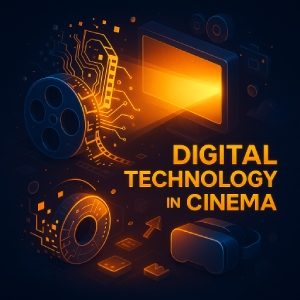
Revolutions in Digital Filmmaking
According to the new millennium, digital filmmaking technology changed how films are created, edited, and distributed. Early on, filmmakers used traditional film reels, but the transition to digital technology altered these offices. Digital cameras took over the bulky film cameras and put filming within reach of independent filmmakers on a budget.
Editing and Special Effects
Digital editing software such as Adobe Premiere Pro and Final Cut Pro has made it easier to manipulate the footage, create special effects, and streamline storytelling in ways unimaginable before. The careers of CGIs permitted filmmakers to present fantastical creatures, vast landscapes, and exhilarating action sequences that practical effects would have never been able to achieve. Two films that stand as testimonies to CGI's power were Avatar (2009) and The Avengers (2012), competing in the creation of immersive and action-packed worlds.
A Timeline of Key Motion Picture Events
-
Louis Le Prince shoots his first moving picture, Roundhay Garden Scene.
-
The first public screening of a cinema was given by the Lumière brothers, La Sortie des usines Lumière à Lyon.
-
Edison creates the Kinetoscope, which allows viewing of moving pictures individually.
-
Release of the highly controversial yet highly influential film in terms of cinematic techniques, "The Birth of a Nation."
-
With sound synchronized onto celluloid, The Jazz Singer simply changed the very paradigm of film making
-
The Wizard of Oz: A landmark in the use of color in cinema.
-
Star Wars puts its hefty foot forward to bring about the age of the blockbusters.
-
The Matrix unleashed visual effects and "bullet time."
- Avatar set higher bars in 3D technology and visual effects.
How Movies Have Changed Forever
Since the first flickering shadows danced their way into the hearts of viewers in 1888 till the present-day digital masterpieces, the history of cinema is seen as an evolving art form. The genres that kept theatergoers occupied through various ages have themselves developed in complexity and diversity, and now digital technology is going to change the very notions of the filmmaking art form forever. Whether one is a casual viewer or a serious cinephile, his heart takes a leap to peer back and wonder how far cinema has come and where it will possibly be in the future.
Regal Cinema at Colaba, Bombay, opened 88 years ago on 14th October 1933 pic.twitter.com/XOp41Jk2el
— Film History Pics (@FilmHistoryPic) October 16, 2021